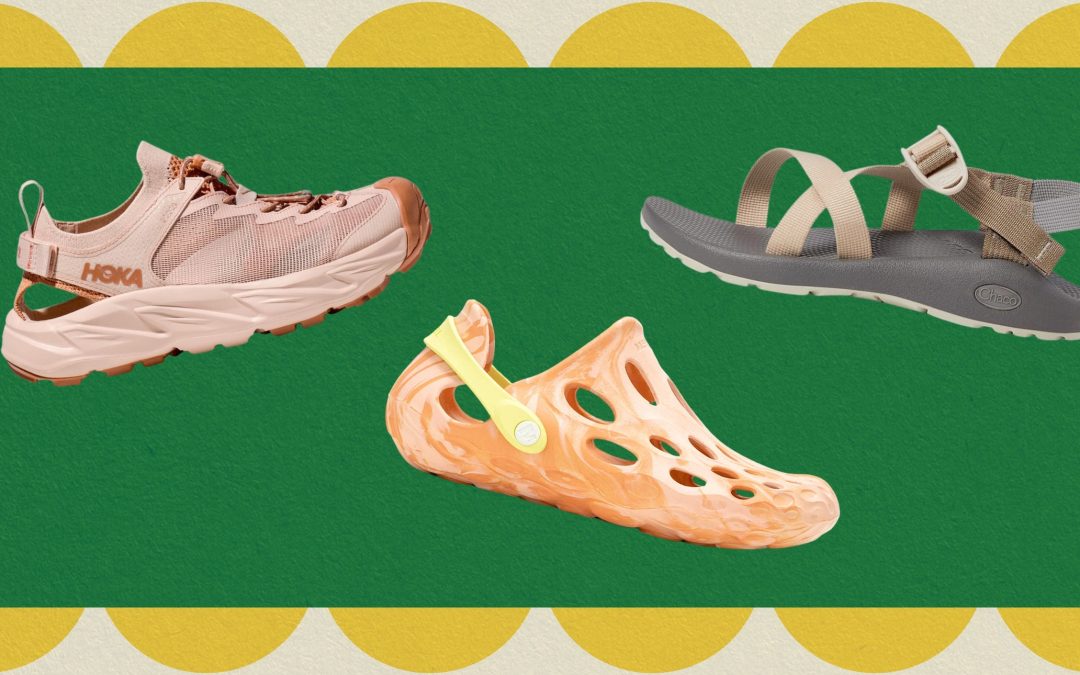- Toe design and protection
Open-toe sandals are the more breathable option, but they expose your feet to the elements. They’re best for experienced hikers who feel confident on most kinds of terrain and people who want a versatile sandal for casual day hikes or walks around town. Closed-toe shoes are a safer option if you’re hiking in wet conditions or exploring unfamiliar, challenging trails, as they can better protect your feet from rocks, roots, and fallen debris, Janine Hatch, PT, DPT, a physical therapist with the Hartford Healthcare Rehabilitation Network in Connecticut, tells SELF. Just keep in mind that they’ll take longer to dry when they get wet.
While we’re on the subject of toes, Dr. Hatch recommends choosing footwear that gives them room to wiggle and spread: “A shoe with a wider toe box is also ideal to prevent skin irritation between the toes and allow for adequate range of motion of toes and forefoot,” she says.
- Outsole
Great traction is a must-have—especially on more challenging terrain. If you plan to venture onto steeper trails or wet rocks, look for a pair of sandals made with sticky rubber (Vibram brand soles are a great option) and a deep lug pattern that’ll bite into the ground and help you feel more secure. Dr. Hatch notes that it’s also important to consider the thickness of the sandal’s sole. For hiking on difficult, rocky, or uneven trails, the sole should be thick enough to absorb the impact of your steps and prevent any debris you step on from piercing your foot, she explains. But if you mostly plan on wearing your sandals around town, on flat trails, or during water activities, you may not need footwear with the grippiest, most rugged sole.
- Straps
Having secure straps on your sandals will help you feel comfortable and agile on the trail. If your shoes are too loose, you’ll likely feel unsteady and risk blisters (which can form when your straps have room to move around and rub against your feet) “I would never buy a hiking sandal without very adjustable straps,” Arianna says.
Also, consider which strap style and material will feel the most comfortable. Some sandals have criss-crossing straps, while others feature more of a thong style. Some straps are padded to reduce pressure points on the top and sides of your feet. This can feel nicer and prevent chafing, but the excess material also means the straps will hold onto water longer. If you want to make sure your sandals dry quickly, opt for a pair with thin, unpadded straps made of moisture-wicking nylon webbing.
- Footbed
The footbed (or insole) is the interior part of the shoe where your foot rests—and its design contributes to the overall comfort and feel of the sandal. Dr. Hatch says built-in arch support is a key component in any good hiking sandal’s footbed. It’ll help stabilize your midfoot and make the shoe feel comfortable for longer hikes. Just make sure the sandal’s arch suits your foot shape (people with flatter feet, for example, will likely find a shoe with a lower arch more comfortable).
According to Pilson, a sandal with a contoured, structured footbed is the most popular style, but it’s not your sole (heh) option. She says some hikers prefer minimalist sandals, which have a flatter, zero-drop insole that’s intended to have a “barefoot” feel. Which footbed feels better will vary from hiker to hiker, but if you aren’t sure what level of support you need (or if you have any foot issues), consult a podiatrist to find the right fit.
Related reading:

